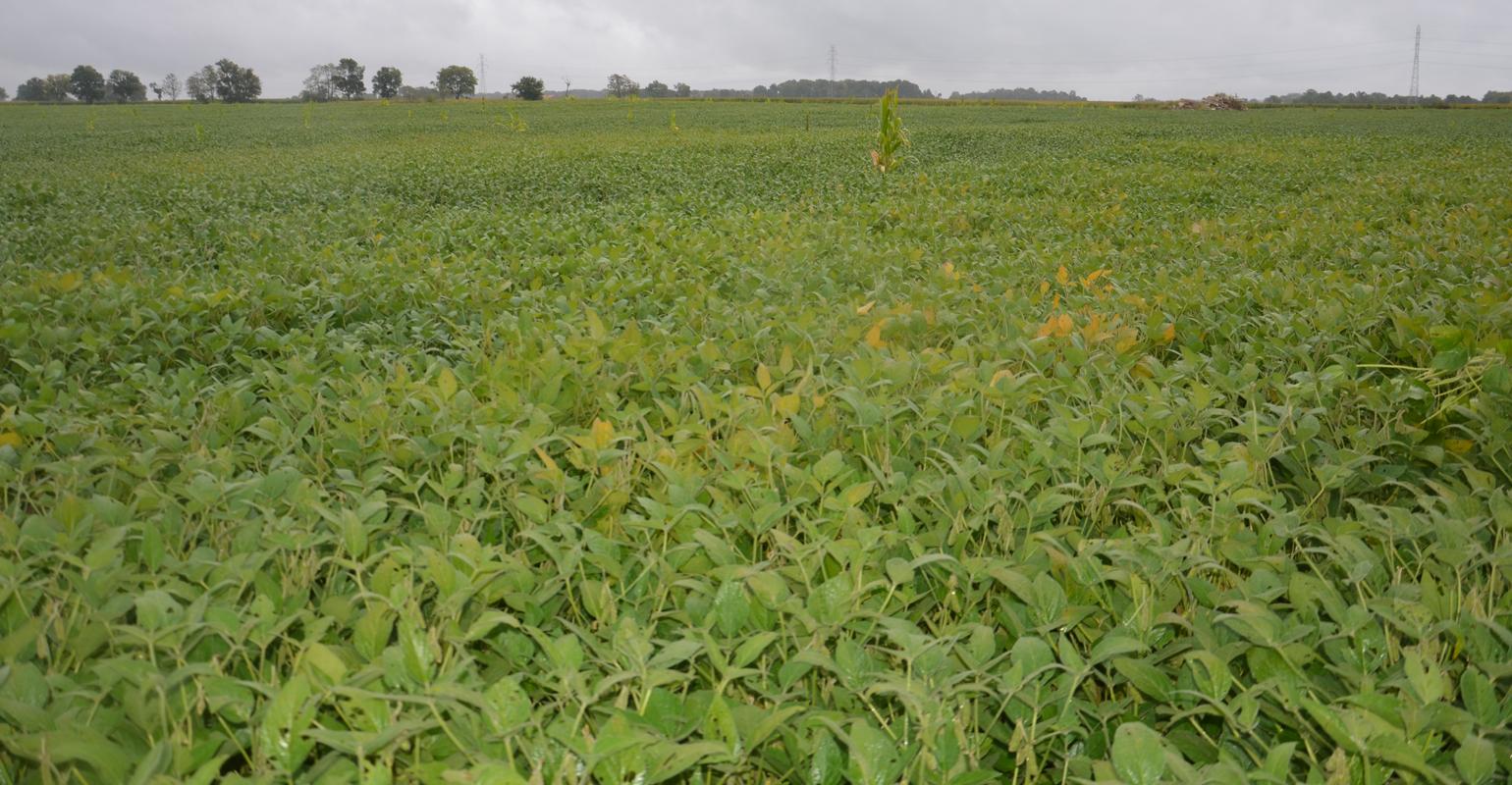Premature color change in beans explained

Soybean Pest Beat: Distinguishing between sudden death syndrome and soybean cyst nematodes can be tough.
Jul 07, 2021
Some patches of soybeans are turning a paler color prematurely. Is it sudden death syndrome? Nematodes? How can I tell? What should I do if it is SDS or soybean cyst nematodes?
The Indiana certified crop adviser panel answering this question includes Betsy Bower, Ceres Solutions, Lafayette; Jamie Bultemeier, agronomist, A&L Great Lakes Lab, Fort Wayne; and Andy Like, farmer and CCA, Vincennes.
Bower: It could be SDS or nematodes or both! Send samples to the Purdue Plant and Pest Diagnostic Lab. Dig five to six whole plants, root balls and soil. PPDL will split the stems and look for brown or gray streaks in the cortex of the lower stem that is typical of SDS, as well as yellow interveinal chlorosis of leaves in the upper canopy. They can look for SCN cysts on roots or analyze the soil for individual nematodes.
If it is either SDS or SCN, note it in your records. Treat soybean seed with a seed treatment that provides some protection for SDS infection. Choose soybeans varieties that have SCNresistance. Some newer seed treatments, Ilevo and Saltro, can provide some protection to both SDS and SCN.
Bultemeier: Look to the edges of patches for visual symptoms where the disease should not be as far advanced. SDS will result in leaves with interveinal chlorosis or yellowing and necrosis, or death. Soybean cyst nematodes will lead to an overall yellowing and necrosis. However, SCN can be masked when it exaggerates other diseases and/or nutrient deficiencies. Both conditions are favored by sandy soil textures.
A diagnostic approach is used when a yellow and stunted area is suspected to have elevated SCN populations leading to visual symptoms. Soil sampling for SCN will be very targeted to validate the cause. Visual inspection of roots can note presence of SCN, but it does not quantify the population.
Eight or more soil sample cores should be taken 6 to 8 inches deep in the affected area. If the field has a history of elevated SCN levels, it may be advisable to take a corresponding sample from a portion of the field not showing visual symptoms for comparison. Once all cores are collected, thoroughly mix the sample and place 2 cups of soil into a sealed and labeled plastic bag. The samples should be sealed to avoid moisture loss and protected from extreme temperatures. If samples are handled in such a way that leads to cyst death, adult counts will be negatively impacted. Ship to the lab as quickly as possible.
Both SDS and SCN are soilborne and need a suitable host to survive. Rotating away from soybeans and using resistant varieties may reduce the pest population over time. Recent development in seed treatments is showing positive results against SDS and SCN.
Like: Start by looking at the symptomatology on affected leaves. If you are seeing yellow-browning between leaf veins, it is likely SDS, but it could also be brown stem rot. It displays the same foliar symptoms. Assuming that it is SDS, it is likely that you also have some SCN pressure. Many times, these two problems show up together. It is theorized that the stress from the SCN allows SDS to proliferate and become a noticeable problem. Fortunately, we have seed treatments that are effective on SDS and SCN. Coupling seed treatment with crop rotation should help control SDS and SCN in future years.

